Giro d'Italia 2023 – 5 key stages
Analysis of where the maglia rosa can be won and lost next May
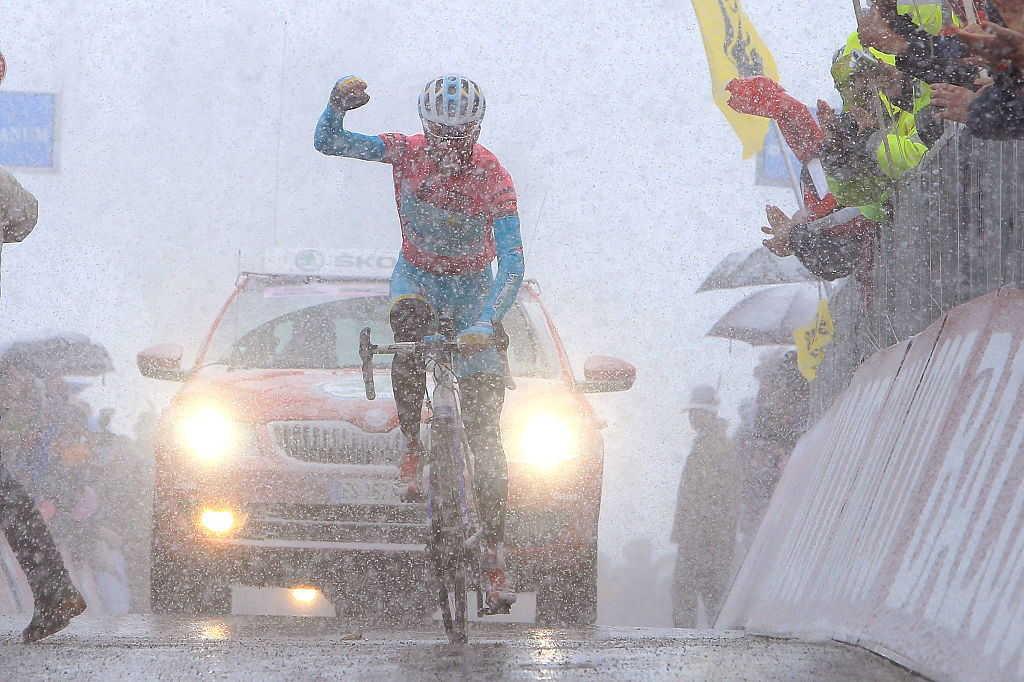
The 2023 Giro d’Italia route can be explained in a few numbers: 21 stages, 3448km of racing, 70.6km of time trialling, 51,300m of climbing, and eight mountain finishes, all between May 6-28.
Yet the 106th edition of the Corsa Rosa promises to be about far more than numbers, data, results and statistics.
The route, which was presented in MIlan on Monday, is finely balanced, with the time trials matched by some steep mountain-top finishes, including the final time trial to Monte Lussari, where a bike change will add an extra twist.
The Giro ends with a tough final week in the Dolomites and Julian Alps near Slovenia but there are a number of pivotal points which will define the three weeks of racing and decide the final classification.
Here, we delve into five of the stages that look set to shape the 2023 Giro d'Italia.
Stage 7
Capua – Gran Sasso d’Italia (Campo Imperatore), 218km
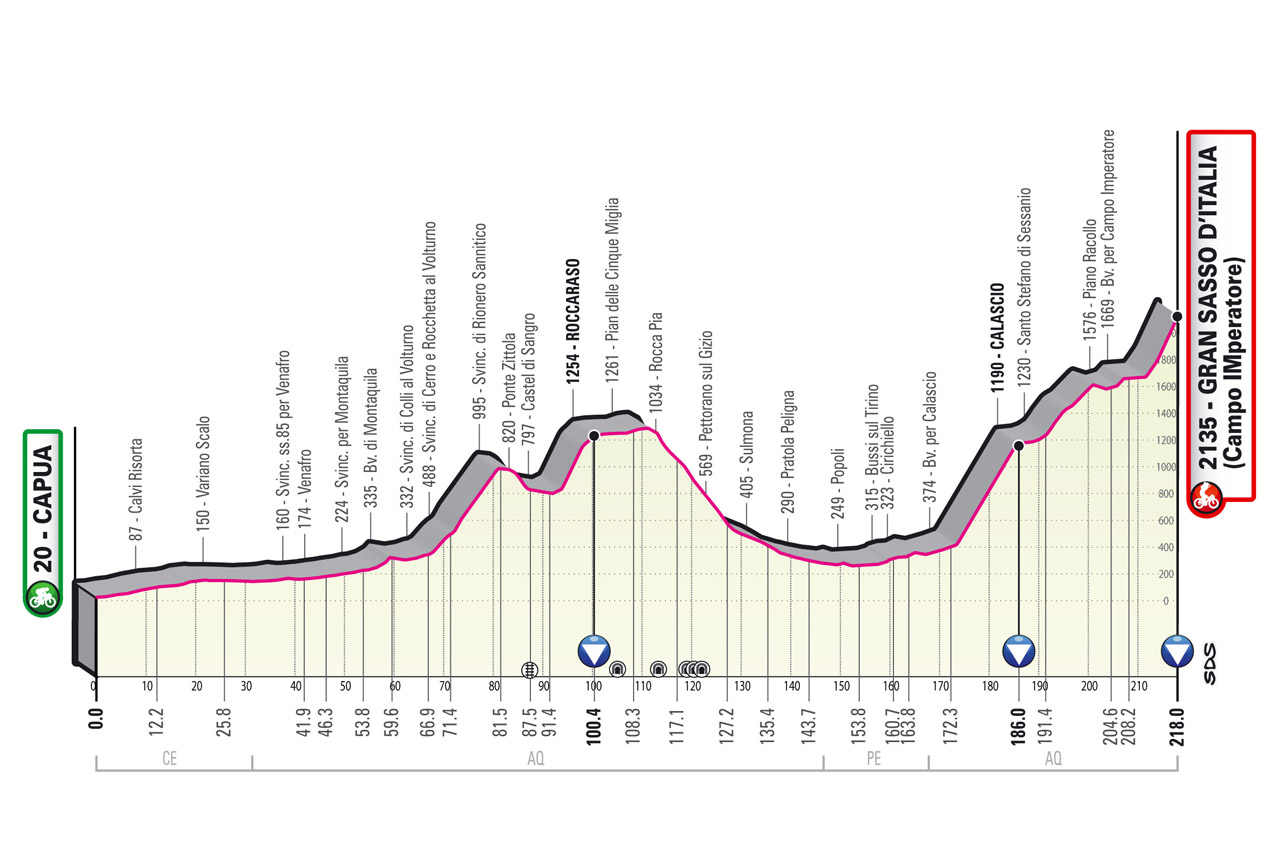
The opening time trial along the Abruzzo coast will award the first maglia rosa and stage 4 to Lago Laceno will be a first place for the GC riders to test each other. However, the stage 9 finish at Campo Imperatore, high up in the Abruzzo Apennines, will reveal the form and ambitions of the overall contenders for the first time.
Get The Leadout Newsletter
The latest race content, interviews, features, reviews and expert buying guides, direct to your inbox!
Stage 9 is the first mountain finish above 2000 metres and at 218km is the longest stage of the 2023 Giro.
The start in Capua is near Naples and the route then cuts inland crossing the southern Apennines via Roccaraso, Piano delle Cinque Miglia and a long descent to the foot of the 45km climb to the Campo Imperatore high plain. A plateau mid-climb offers some respite but the gradient kicks up in the final kilometres with the sections at 13% a perfect place to attack and gain some early time.
Simon Yates claimed victory here in 2018 and Marco Pantani triumphed in 1999 before he was later disqualified for a high blood haematocrit level, leading to his tragic demise.
Stage 9
Savignano sul Rubicone – Cesena (ITT), 33.6km
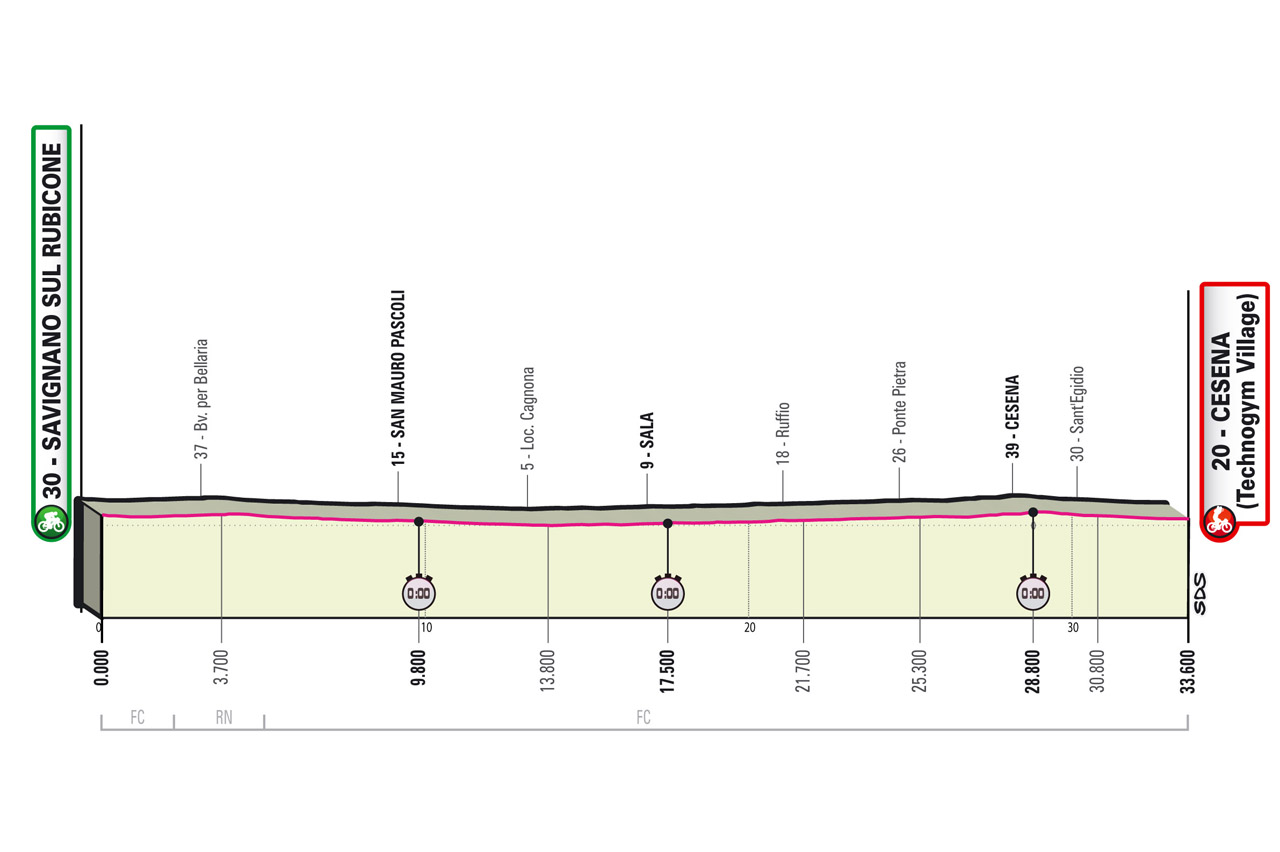
If a stage was added to the 2023 Giro d’Italia to appease Remco Evenepoel and other time triallists, it is this pan-flat time trial across the Romagna plain from Savignano sul Rubicone to Cesena.
The 33.6km route follows straight country roads and then cuts back inland to finish at the headquarters of gym equipment and indoor bike brand Technogym. The conditions will be so constant, the riders' efforts so controlled, that the stage could easily be contested on a virtual platform like Technogym's and the result would likely be the same.
It seems perfect for Remco Evenepoel to gain time on his rivals - perhaps just a few seconds on the likes of Primoz Roglic and Geraint Thomas but much more on everyone else. Of course, if they ride the Giro d’Italia, the stage would offer a superb battle between Filippo Ganna and Wout van Aert.
Like those two, Evenepoel can stay low in his aerodynamic tuck, produce his peak power and so gain seconds in every kilometre of the 33.6km course.
Evenepoel could already be in control of the maglia rosa after nine stages and before the first rest day on Monday May 15.
Stage 13
Borgofranco d’Ivrea – Crans Montana, 208km
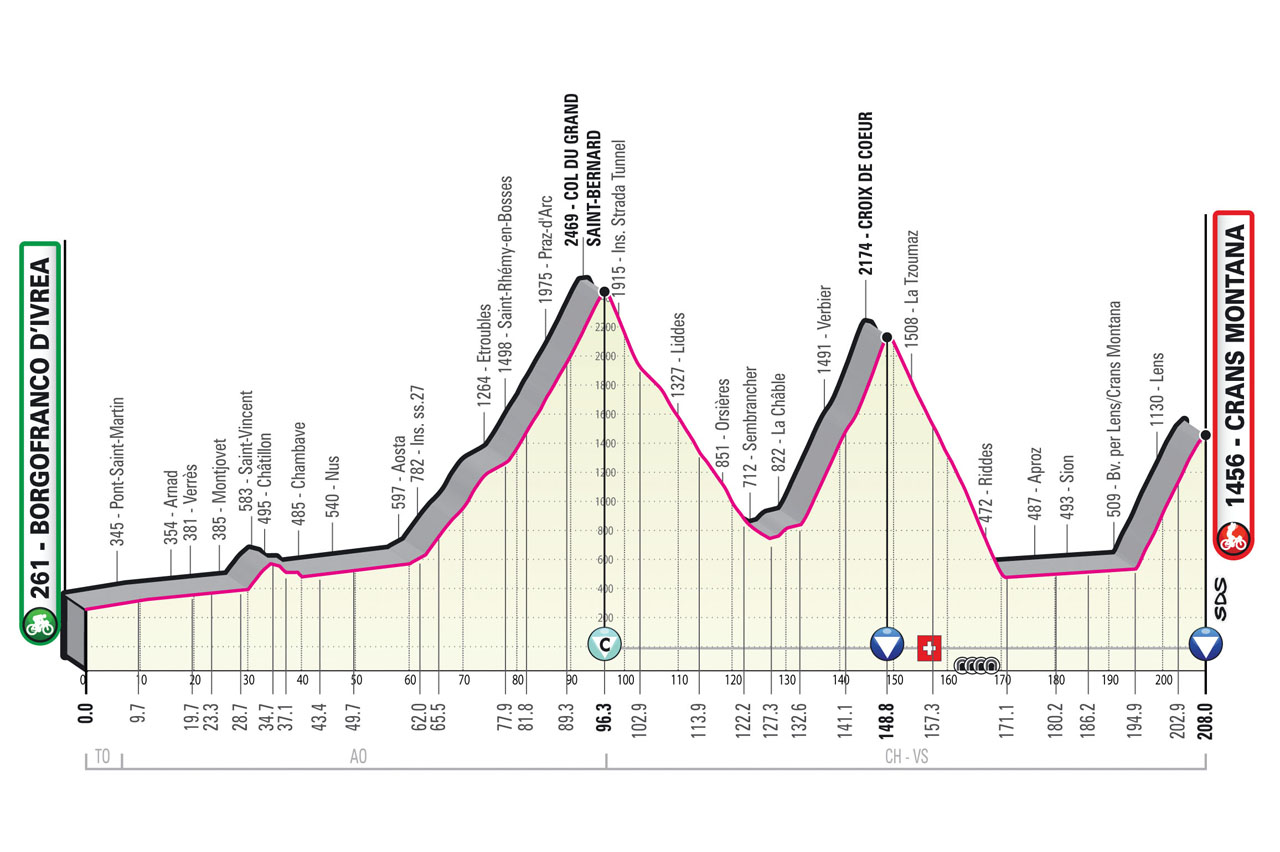
Vincenzo Nibali identified this stage as a pivotal moment in the 2023 Giro d’Italia as soon as he saw the race profile in Milan on Monday afternoon.
The two-time winner knows that it will produce the first major showdown in the fight for overall victory. There will be nowhere to hide on stage 13, with the true contenders riding to the top of the general classification and setting the race narrative for the rest of the Giro.
Stage 13 is the first major mountain stage, with three climbs standing large in the 208km profile. Race director Mauro Vegni has learnt to stay below the late May snow line to avoid the risk of extreme weather, protests and last-minute route changes but has opted for a ride high into the Swiss Alps.
The first climb is the highest, with the 34km Gran Saint Bernard rising from the valley road to 2469m to award the prestigious Cima Coppi prize to the first rider over the top of the race’s highest climb. The gradient is constant at 5.5% but is also 34km long.
The Croix de Coeur begins straight after the 30km descent and returns to 2174m during 15km of climbing. It is shorter than the Grand Saint Bernard but is steeper with an average gradient of 8.8% and points at 13%. They are two very different climbs and will have two very different impacts on the riders.
Another fast descent and a 30km valley road takes the riders to the foot of the climb to the finish in Crans Montana. The stage route avoids the faster main road to the Swiss ski resort and instead opts for a lesser-used road that starts steep, with sections at 13%, and then eases for an average of 7.2% for the race to the finish line.
Stage 19
Longarone – Tre Cime di Lavaredo, 182km
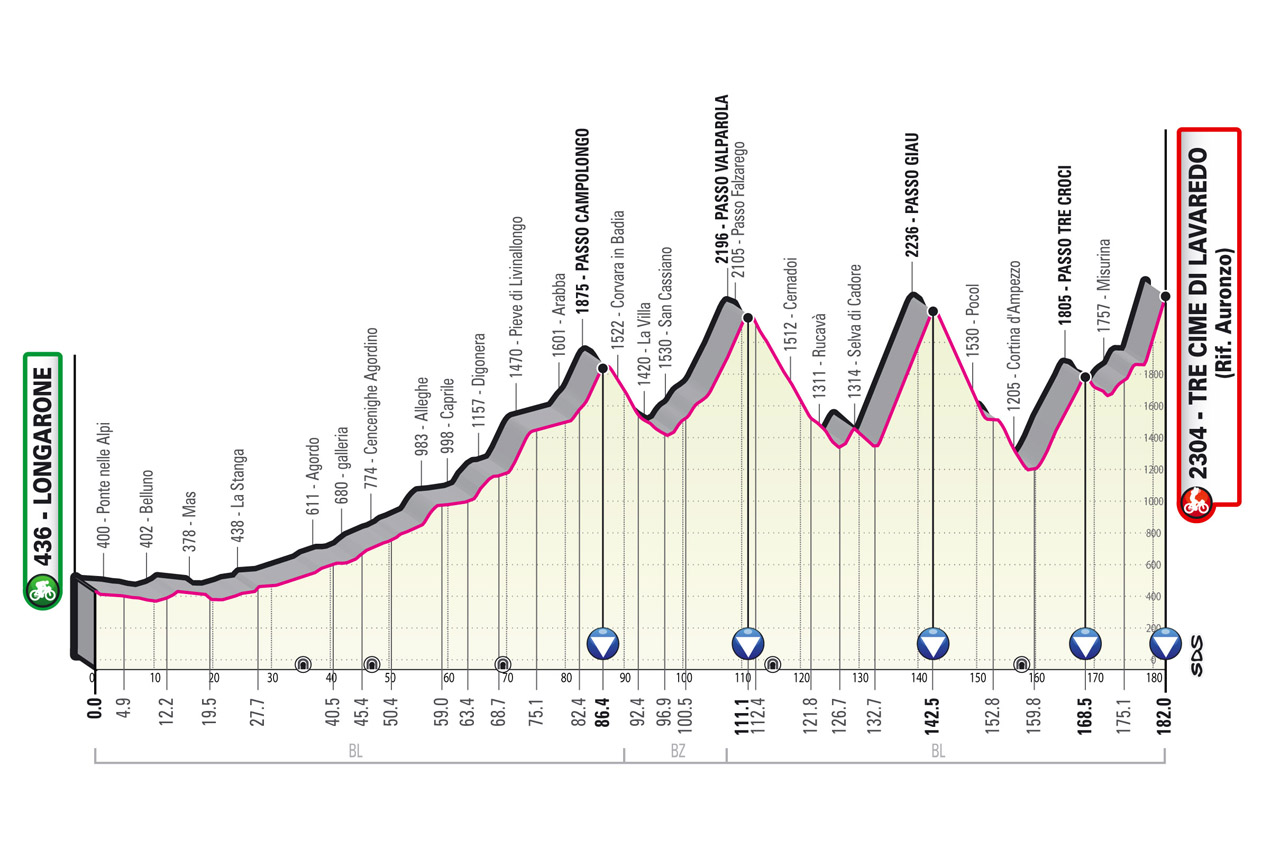
Stage 19 is the hardest of the final trittico of mountain stages and combines a multi-climb ride through the Dolomites with a steep finish in the shadow of the Tre Cime di Lavaredo jagged peaks. It rightly deserves the tag of Queen Stage of the 2023 Giro d'Italia.
The start in Longarone remembers the victims of the Vajont floods, 50 years after the tragic event. The first third of the stage is on the valley roads, with the climbs packed tight in the rest of the 182km stage, adding up to a total of 5400m of climbing.
The easier Passo Campolongo comes first and takes the riders into the stunning Alta Badia area, followed by the Passo Valparola and then the always-feared Passo Giau.
It is less than 10km long but hurts due to the average gradient of 9.3% and a maximum of 14%. The Giro again climbs from the Selva di Cadore side to reach the 2233m summit before a dive down towards Cortina and then the two-step climb to the finish at Tre Cime di Lavaredo.
The first part is on the Passo Tre Croci climb before a brief descent to Misurina and then the haul up to the finish at 2304m. The road snakes up the side of the mountain and valley to the foot of the three limestone peaks, with the finish in the ski resort car park near the Rifugio Auronzo.
The steepest parts touch 18% and are where Nibali danced away from his rivals in 2013 in a snow storm, whilst wearing the maglia rosa.
Tre Cime di Lavaredo has only hosted the Giro d’Italia eight times but most have been legendary, with Felice Gimondi, Eddy Merckx, Jose Manuel Fuente, Beat Breu, Lucho Herrera and Nibali winning there. The overall winner of the 2023 Giro may want to add their name to the roll of honour.
Stage 20
Tarvisio – Monte Lussari (ITT), 18.6km
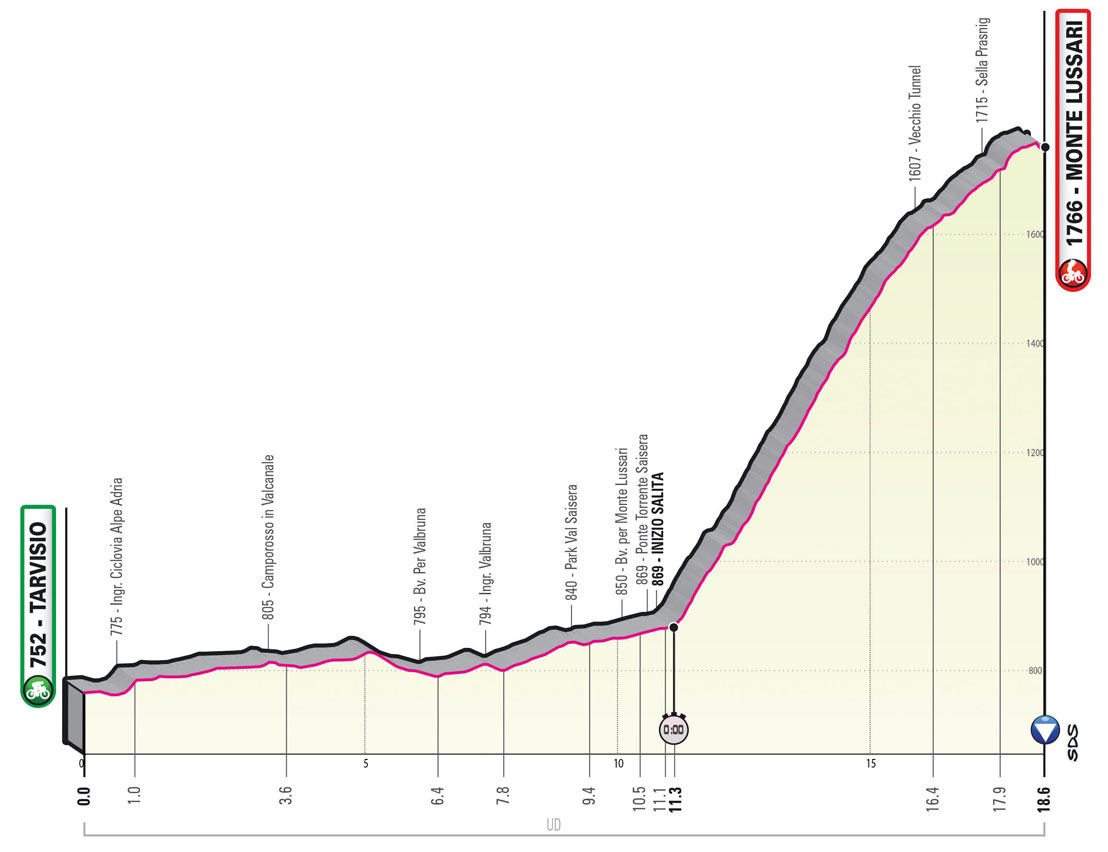
Race director Mauro Vegni is proud to have frequently added mountain time trials to the Giro and, thanks to the work of local contact Enzo Cainero, Monte Lussari joins the Zoncolan as the next legendary Friuli climb in the northeast of Italy.
Vegni was quietly hoping that the proximity of Monte Lussari to the Slovenian border would persuade Tadej Pogačar to ride the Giro d’Italia and attract thousands of Slovenian cycling fans. Pogačar will focus on the Tour de France in 2023 but the stage still promises to be a thrilling finale to the race, with the UAE Team Emirates rider’s absence perhaps creating a finely balanced and thrilling race.
The 18.6km stage is a time trial of two halves, with 10 kilometres on the slightly descending and very fast Ciclovia Alpe Adria bike path. The climb to Monte Lussari is eight kilometres long and averages 12.1% on a rough-surfaced concrete road very much like the Zoncolan. The middle 4.8km section climbs at 15% with a final kick up to the sanctuary at 22%.
The different terrains will surely see riders opt for a bike change before the climb starts, swapping full time trial bikes for lightweight climbing road bikes so they can dance on the pedals to fight the steep gradient. The riders and teams know that a bad bike change could cost them victory in the Giro d’Italia.
It will be a high-stakes final mountain stage. Whoever pulls on the maglia rosa at the spectacular Monte Lussari sanctuary will then be crowned the overall race winner in Rome some 750km to the south on Sunday May 28.

Stephen is one of the most experienced member of the Cyclingnews team, having reported on professional cycling since 1994. He has been Head of News at Cyclingnews since 2022, before which he held the position of European editor since 2012 and previously worked for Reuters, Shift Active Media, and CyclingWeekly, among other publications.